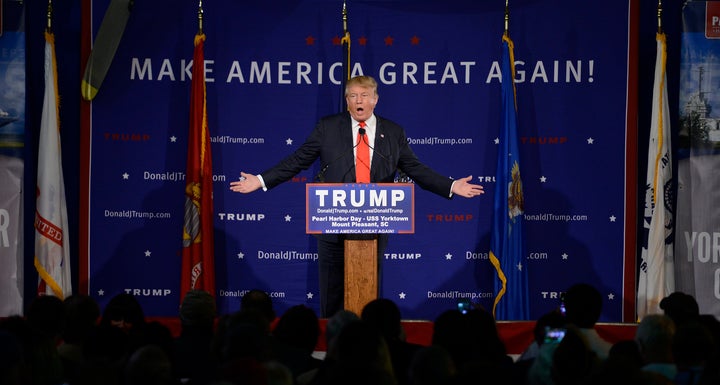
This week, federal judges from both Maryland and Hawaii drew upon President Trump’s comments from the campaign trail to conclude that the advancement of religious discrimination was, in fact, the primary purpose of his administration’s latest travel ban. The judge from Maryland observed that “[t]hese statements, which include explicit, direct statements of President Trump’s animus towards Muslims and intention to impose a ban on Muslims entering the United States, present a convincing case that the First Executive Order was issued to accomplish, as nearly as possible, President Trump’s promised Muslim ban.” President Trump’s attorneys had contended, to no avail, that these promises and statements should not be weighed in the evaluation of the Order’s primary purpose. The court flatly dismissed the idea that the President’s words were irrelevant, noting that, “Simply because a decisionmaker made the statements during a campaign does not wipe them from the ‘reasonable memory’ of a ‘reasonable observer.’” The judge from Hawaii noted that despite the Order’s stated purpose, “reasonable, objective observer — enlightened by the specific historical context, contemporaneous public statements, and specific sequence of events leading to its issuance — would conclude that the Executive Order was issued with a purpose to disfavor a particular religion.”
This utilization of past comments by a decision maker to determine the constitutionality of his act stands in stark contrast with the way in which the law evaluates the alleged discriminatory intent of a decision maker accused of employment discrimination. Most courts addressing employment discrimination cases adhere to an exacting “stray comments rule” that systemically excises from consideration all comments that are not contemporaneous with, and specifically about, the plaintiff and the precise adverse action at issue. In fact, unless a comment, epithet, or joke made by a decision maker was said about the specific employee suing, in the context of the decision that gave rise to the suit, and with extremely close, if not perfect, temporal proximity to the actual decision, they are typically considered “stray,” and absent some other, more direct evidence of discriminatory intent, the case is not deemed worthy of going to trial, let alone being won.
With past “stray comments” now being debated by the public because of President Trump’s losing arguments in court, there exists a window of opportunity to scrutinize the stray comment doctrine in the employment context as well. Granted, these two types of cases are not completely analogous. In one case, the trier is evaluating the constitutionality of an act, specifically whether the act violated the First Amendment’s Establishment Clause and its mandatory separation of church and state and non-endorsement of religion. That analysis requires inquiring into, among other things, whether a governmental action is motivated by a purpose or intention that is discriminatory with respect to a religion. In the other case, the trier is evaluating whether an individual decision maker’s decision was the result of intentional class-based discrimination, like that which is based upon an employee’s race or sex. However, there are obvious similarities as well. At its core, intent is, across contexts, an unknowable x-factor that can only be discerned by a “smoking gun,” like an admission, or circumstantial evidence that can lend insight into an undisclosed mindset. Triers are essentially being asked to infer elusive, often-denied truths whenever purpose or intention is called into question. And what you are allowed to use to make that inference is of crucial importance.
What we have, then, is an inconsistency in the way in which courts approach the issue of the use of past comments about a group to show intent. On one hand, courts have a long-stated practice of factoring in evidence of intent, like the historical context of an act and the statements of decision makers, when ascertaining governmental purpose in First Amendment cases. This practice imbues the query with insight that can only be gleaned from surrounding circumstances to get at the core issue of the intent. On the other hand, in Title VII and other employment discrimination cases, courts are loath to allow the factoring in of evidence against an accused discriminator, like jokes, comments, and acts, where they are slightly removed from the decision at issue, lest such “separate” activities forever taint an individual or his subsequent acts. In many jurisdictions, the slightest hint of temporal or contextual distance between the remarks and the act at issue will be fatal to an employment discrimination plaintiff’s claim. The statements are seen as being simply too attenuated from the act to anchor the claim and propel it past summary judgment and to trial.
It is important to note that both the courts’ use of Trump’s statements and the stray comment doctrine, itself, have been criticized. That said, there does not appear to be a basis to treat the evaluation of alleged acts of employment discrimination so differently from the evaluation of alleged Establishment Clause violations. The precise point of a central query in each type of case is to discern intent.
This is a good time to reflect on employment discrimination cases and the plaintiffs who bring them. These plaintiffs are charged with proving that the discrimination that they suffered was, in fact, “because of” their race, sex, etc. This involves delving into undisclosed mindsets and biases that may be covert, or even subconscious. Employment discrimination plaintiffs are notoriously unsuccessful in their suits, as compared with other types of plaintiffs. Scholars have posited that they are, as a group, particularly mistrusted, making it harder for them to prevail in court. This is a good time to revisit the ways in which their cases are adjudicated. It is a good time to re-examine the doctrines and mechanisms that serve to summarily dispose of many of their cases before they can even be tried.